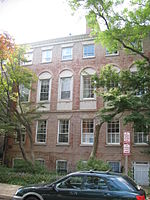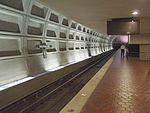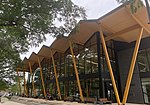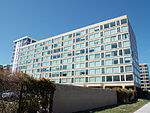Arena Stage
Arena Stage is a not-for-profit regional theater based in Southwest, Washington, D.C. Established in 1950, it was the first racially integrated theater in Washington, D.C., and its founders helped start the U.S. regional theater movement. It is located at a theater complex called the Mead Center for American Theater. The theater's Artistic Director is Molly Smith and the Executive Producer is Edgar Dobie. It is the largest company in the country dedicated to American plays and playwrights. Arena Stage commissions and develops new plays through its Power Plays initiative. The company now serves an annual audience of more than 300,000. Its productions have received numerous local and national awards, including the Tony Award for best regional theater and over 600 Helen Hayes Awards.
Excerpt from the Wikipedia article Arena Stage (License: CC BY-SA 3.0, Authors).Arena Stage
6th Street Southwest, Washington
Geographical coordinates (GPS) Address Website Nearby Places Show on map
Geographical coordinates (GPS)
| Latitude | Longitude |
|---|---|
| N 38.8772 ° | E -77.0203 ° |
Address
Arena Stage (Mead Center for American Theater)
6th Street Southwest 1101
20024 Washington
District of Columbia, United States
Open on Google Maps







